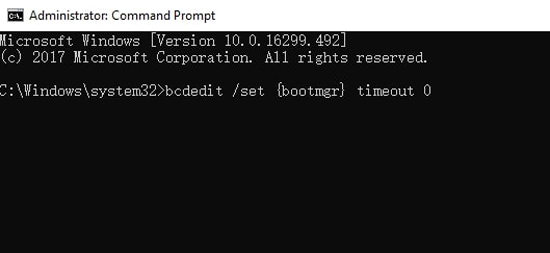Windows Boot Manager also was known as BOOTMGR is a component of the new Windows Boot Loading Architecture that is designed to boot and load Windows quickly and securely. This new Boot Manager replaced NRLDR that was used earlier by Microsoft in their Windows Operating Systems.
After knowing what is Windows Boot Manager, let's find out when it became useful. When you are using a dual operating system on your computer, a program appears on startup screen asking to choose an operating system. That's the Windows Manager working to help you get logged into OS you need to log in. The boot Manager menu allows users to modify the startup sequence of their computers temporarily. "F8" key can be used as soon as your computer turns on to access Boot Manager Menu. In this guide, I will explain how you can access Windows Boot Manager, enable or disable it and Fix issues if you jump into any.
- Part 1: Top 3 Ways to Access Windows Boot Manager
- Part 2: How Do I Enable or Disable Windows Boot Manager
- Part 3: How Do I Fix Windows Boot Manager?
Part 1: Top 3 Ways to Access Windows Boot Manager
Now you have basic knowledge and necessary information about Boot Manager of Windows. Let's learn how to access boot manager I'll try to cover multiple methods so just in case one doesn't work for you you'll have another to give a shot.
1. Shift and Restart Method
The easiest among all methods is Shift and Restart method; simply restart your Windows PC while holding the Shift key. Here's a step by step guide to restart your PC into Windows boot manager in easiest possible way.
- Hold the Shift Key on your keyboard.
- Restart computer While holding the Shift key.
Now, wait till the computer restart into the recovery mode.
2. Using Setting App
If you'd like to jump through a few extra hoops rather than just hitting Shift+Restart, you can also launch the "Advanced Options" menu through the settings app. Press Windows+I to open the Settings app.
If the SHIFT+RESTART method didn't work for you or you didn't like the way of it; here is another method. You can get into the boot manager of Windows 8 or 10 through the Setting App. Follow these steps to get it done:
Step 1: Click on Start and Press the Setting Button.
Step 2: Click on the "Update & Security" card from Settings.
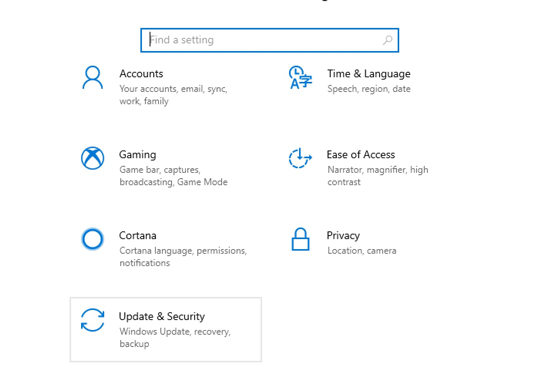
Windows 10 Users: In the left panel, click on the "Recovery" tab then scroll, and click the "Restart Now" button in the "Advanced Startup" section.
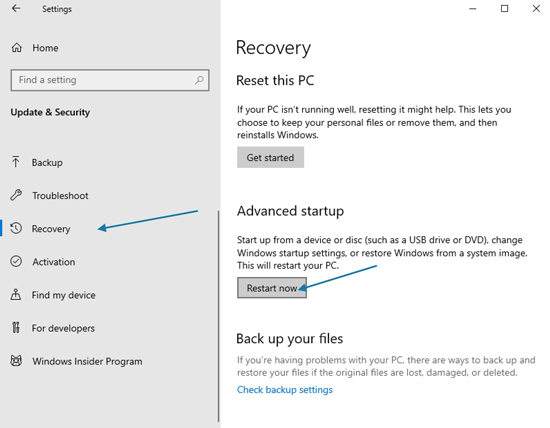
Windows 8 Users: If you're using Windows 8, click on the "General" tab instead, and then click the "Restart" button in the "Advanced Startup" section.
3. Command with PowerShell
This method is bit technical and involves running a command on PowerShell with administrator rights. Press Windows+X simultaneously, and then clicking on the "Windows PowerShell (Admin)" option on the Power User menu.
Now type following command then hit Enter:
shutdown.exe /r /o
A warning message saying you are about to sign off will appear on your screen, and you'll be booted into Advance Options.
Part 2: How Do I Enable or Disable Windows Boot Manager
You might be looking for a solution to either remove a Windows or other Operating system from Boot Manager or completely disable it. Don't worry these two methods mentioned below can surely help you enable or disabled boot manager of Windows OS.
1. Utilize Command Prompt
To enable/disable BOOTMGR via Command Prompt, you need to have administrator privilege to perform. If you don't have this access, it is suggested that you use Renee PassNow to create one before following the steps below.
Step 1: Open Command Prompt of Windows by pressing Windows+X concurrently and click on CMD and running it with administrator rights.
Step 2: Now enter following commands and press enter one by one.
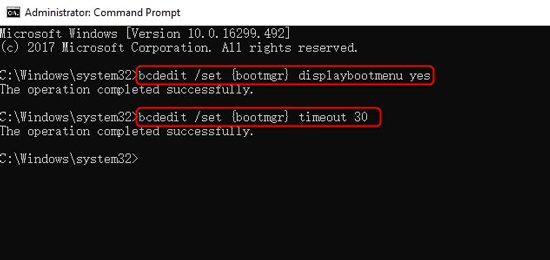
- bcdedit / set {bootmgr} displaybootmenu yes
- bcdedit / set {bootmgr} timeout 0

2. Changing System Properties
If you don't want to get into the trouble command-line interface, you may use the change system properties option to disable or enable Windows Boot Manager by following these steps.
Step 1: Open the Run dialogue window by concurrently pressing Windows+R buttons.
Step 2: Then type sysdm.cpl and click OK or press Enter to continue.
Step 3: When the System Properties window appears, click on the Advanced tab. Then click on the Settings button under the Startup and Recovery box.
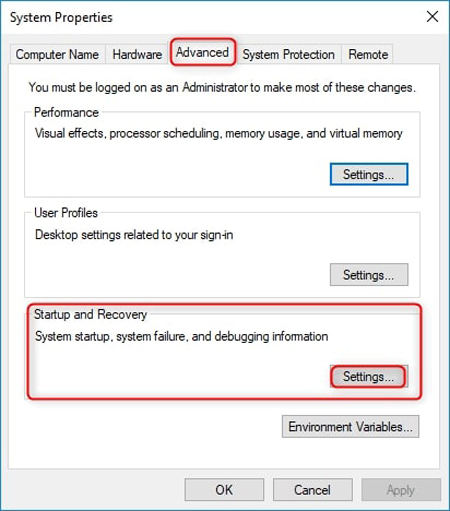
Step 4: In the pop-up window, select the Time to display a list of operating systems box and set the time value. After that, click OK to save the changes.
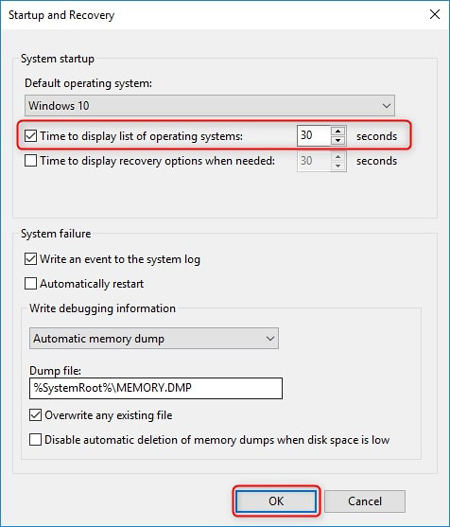
Step 5: If you want to disable BOOTMGR, cancel Time to display a list of operating systems box or set the time value as 0 and click "OK" to finish the operation.
Part 3: How Do I Fix Windows Boot Manager?
While it usually not happen too often but if is happening then its because of mishap or bad luck that windows boot manager failed. This issue is prohibiting you from logging into Windows. We've prepared a quick guide for you. Following are a few common errors you may face related to Boot Manager:
- The "Error loading operating system" error
- The "Operating system not found" error
- The "Invalid partition table" error
- The "No bootable medium found" error
- The Reboot and Select proper boot device error
Now that you have a brief knowledge of errors you may face, let's try resolving them.
Step 1: Boot your computer with CD or USB that has Windows Recovery.
Step 2: Instead of new installation click on "Repair your computer".
Step 3: Then Choose to Troubleshoot.
Step 4: Now click on the Command Prompt and Enter Following One by One:
bootrec /FixMbr bootrec /FixBoot bootrec /ScanOs bootrec /RebuildBcdStep 5: Type "exit" in the command prompt and hit the Enter button on your keyboard.
Now all you have to do is restart your computer and then check if you can boot into Windows 10.
If bootrec utility didn't fix your Windows 10 installation, try following the next commands to it will fix the EFI bootloader:
Step 1: Follow Step 1, 2 and 3 as mentioned above and then instead of entering above mentioned commands enter followings. These commands will select the first disk of your computer and the list all the partitions available on that disk.
diskpart sel disk 0 list volStep 2: Look up FAT32 formated volume because EFI partition is formatted under FAT32 format. Assuming EFI partition is "2" enter following in CMD:
sel vol 2Step 3: Now assign a letter to this partition to access it easier, choose one that isn't available already on your system like common C, D, E, F... try x, y or z.
assign letter=x:Step 4: Following success message will appear after completion:
DiskPart successfully assigned the drive letter or mount pointStep 5: Exit the disk utility by entering the following command into Command Prompt.
exitStep 6: Now you need to change the current directory to your EFI partition with the help of letter we assigned earlier.
cd /d x:\EFI\Microsoft\Boot\Step 7: Replace drive letter with one of yours. Then type the bootrec command to repair the volume:
bootrec /fixbootStep 8: After that, make a backup of old BCD and recreate a new one by typing:
ren BCD BCD.backupStep 9: Enter the following command to recreate BCD just replace directory letter with yours:
bcdboot c:\Windows /l en-us /s x: /f ALLStep 10: Now all you have to do it to wait for the process to complete and then Type "exit" command and restart your PC.
To avoid all of the hassles you can use Tenoshare Windows Boot Genius which has an easy to use graphical user interface. A graphical user interface is much better compared to the command prompt. Windows Boot Genius can help you burn bootable ISO Image into a disk with a blank CD/DVD/USB to help you boot your PC from various scenarios, such as black screen, blue screen, loading circle, etc.
Summary
It is a complete guide about the Windows Boot Manager the first thing that appears in this guide is about Educating Users about Boot Manager. In the first part accessing and management of windows boot manager is explained. In the second part, you'll learn how to enable to disable BOOTMGR in Windows 8 and Windows 10. The third party is a complete guide to fix issues if any appear with your computer related to Boot Manager.
